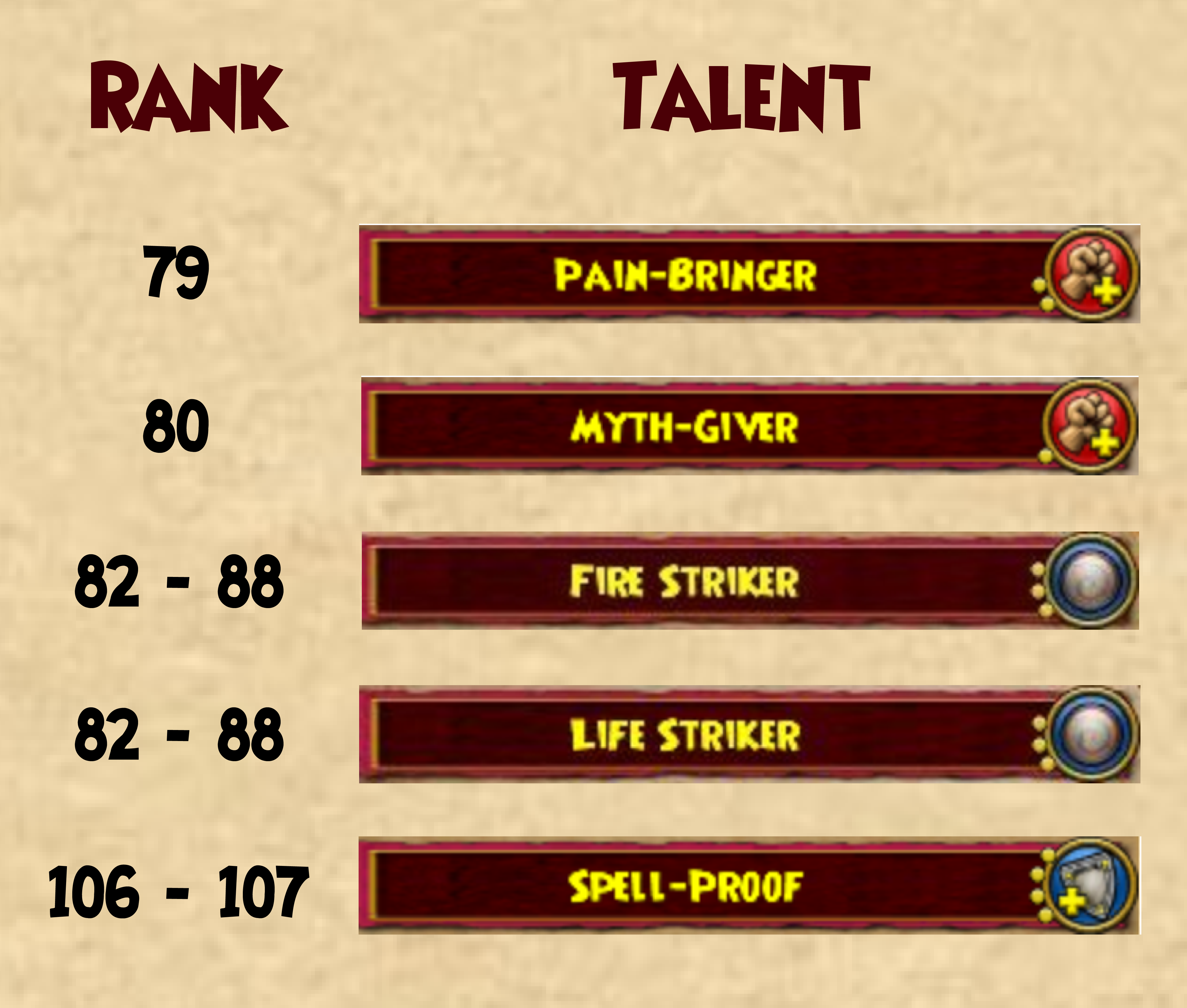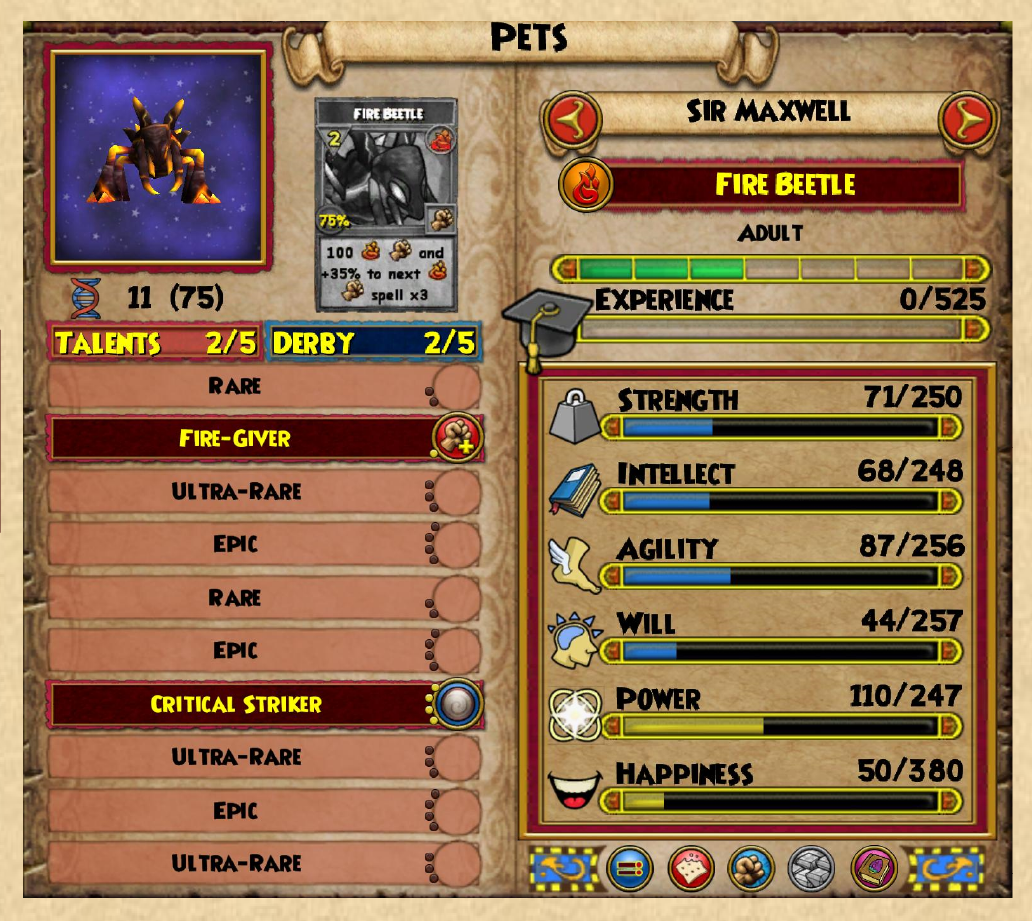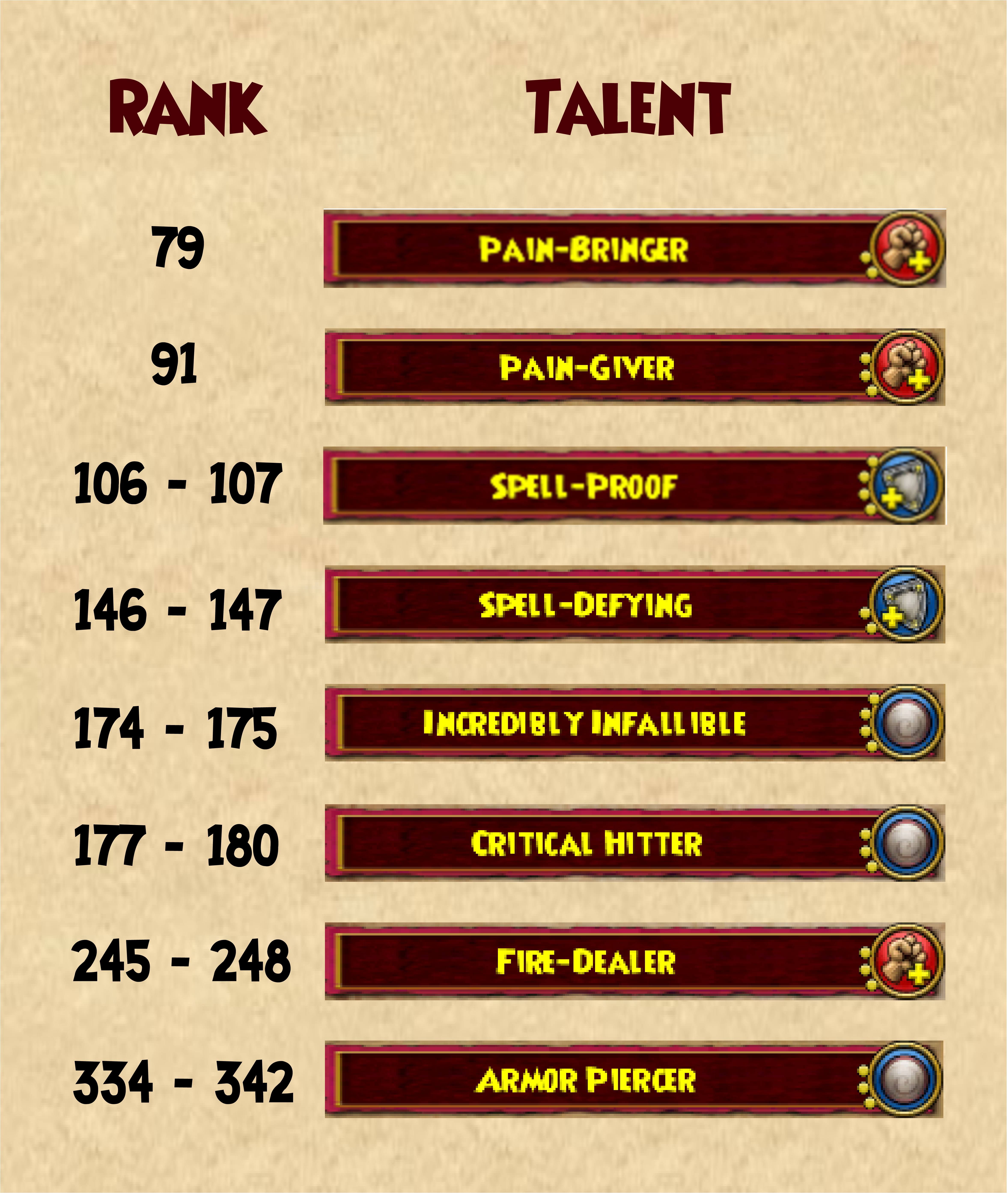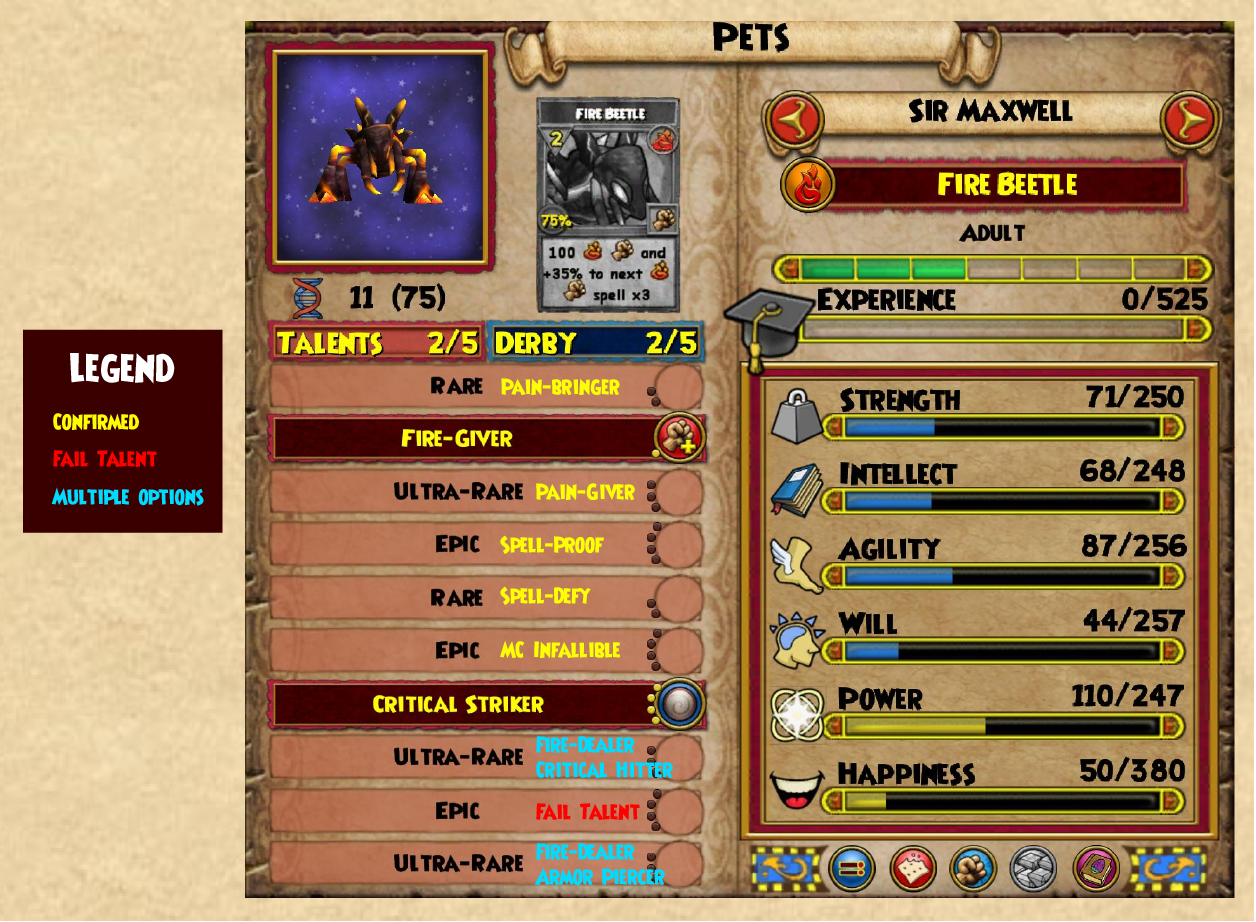August 1, 2020
Advanced Pet Training
The Pet Genome
There’s no disputing that, ever since their introduction, pets have been a huge factor in Wizard101. They impact every part of the game from gardening, to PvP, to questing. Naturally, with something as important as pets, dedicated players have spent years improving and mastering the art of “creating the perfect pet.” We can often see their glorious creations with clean talent pools, perfect stats, and ideally manifested talents. These pets are a testament to the progress the player base has made with its pet training proficiency.
If you are not very familiar with pets and pet training, make sure to first check out our beginner guide to Wizard101 pets to gain a better idea of what this article discusses.

Now, I know that many players have already mastered pet training. They’ve honed the skill of pool reading and already have several perfect / top tier pets. For them, there’s no more room to improve. They’ve fully mastered pets – right?
What if I told you that there’s a more precise way to determine the talents in your pet’s pool? Better yet, it involves little to no guessing. With this system, you can potentially determine the majority of the talents in your pet’s pool with absolute certainty. No more guessing if that Ultra-Rare is Pain-Giver or Dealer, if that Epic is Critical Striker or Assailant. Now, you can know for sure. Sounds pretty good doesn’t it? Let’s get down to business.
Here is some terminology that you’ll need to know to understand this article:
Glossary
Manifest: a pet gaining a specific talent from training
Talent Pool: the 10 talents a pet can manifest
Clean Talent Pool: a talent pool where all talents are acceptable
Pool Reading: making educated guesses about what talents are in a pet’s talent pool
The Pet Genome
Allow me to introduce the Pet Genome. The phrase “pet genome” is synonymous with “talent pool” – the potential talents a pet can manifest. The difference in name refers to a recently concluded community project from Wizard101 Central titled Project O. The core focus of the project involved researching the ordering of talents in the pet genome. What is ordering, you ask? A simple example of talent ordering can be seen in the talents Spell-Proof and Spell-Defying.
Ever notice how Spell-Proof always appears above Spell-Defy? This is no coincidence. In fact, it’s quite the opposite, it’s guaranteed. All pet talents in the game have a hidden value associated with them – consider it a rank of sorts. Like a human genome, talents appear in the pet genome in the order of their ranking. It just so happens that due to their ranks, Spell-Proof will always appear above Spell-Defy. Now I’m sure you’re beginning to see the value understanding pet genome ordering can provide. If we knew the hidden ranks of all pet talents, then we could always decipher exactly what talents a pet has with absolute certainty. This is exactly what the goal of Project O was – gather data to discover these hidden ranks.
How to Read the Data
Below I’ve listed a few examples of pet genome data:

Note: This display is not available in-game. This is a visual created for explanation purposes only.
Note that rank of each talent appears to its left. The ranking system is fairly straightforward: the lower the rank, the higher it shows up. Think of it like a pet talent leaderboard of sorts where rank 1 appears at the top and talents appear above other talents that have a bigger ranking than them. In the example above, Pain Bringer, with a rank of 79, will always appear above Myth Giver, which has a rank of 80.
Fortunately, Pain Bringer and Myth-Giver are two of the few talents whose exact ranking has been discovered. As ranking is essentially a count of the number of talents that can appear above a particular talent (for example, 78 other talents can appear above Pain Bringer), in order to discover a talent’s exact ranking, you would need to discover its relationship to all other talents.
Given this enormous task, the exact ranking of the majority of pet talents has not been discovered. Instead, a ranking range is used in place of an exact value. The range indicates that the rank for that talent is within that range, inclusive. So, the rank of Fire Striker (Rank: 82 – 88) is 82, 83, 84, 85, 86, 87, or 88. The exact value is currently unknown. Talents that share an upper or lower bound have an unknown relationship. For example, it is unknown whether Fire Striker (Rank: 82 – 88) appears above or below Life Striker (Rank: 82 – 88) and vice versa.
How to use Pet Genome Ordering
Despite the fact that the exact ranks for most talents haven’t been discovered, the community and team at Project O have still been able to gather almost all the relationships for all talents. To view the full database, head to the original Project O forum page. Even without the exact ranks for all talents, with the information already gathered, the genome data still has significant power. Although there are several advanced techniques using the pet genome data that can be performed for exact talent determinations, I’ll instead showcase a more casual and common usage of the pet genome data for talent prediction.
Take Sir Maxwell here – beyond his 2 manifested talents, the rest of his pool is a mystery. Now an advanced pet trainer may be able to guess a few of these talents from being familiar with the rarities of talents. They might be able to ascertain that Spell-Proof and Spell-Defy are in the talent pool. As well as, potentially, Pain-Giver and Fire-Dealer. However, using the pet genome data and some knowledge of the pet’s parents, we can determine almost the entire pool with complete flawless accuracy.

Reading the Pool
From the parents (which aren’t shown here) we know that some assortment of the following talents could be in this pet’s pool:

To begin, let’s start with the easiest talent prediction – the rare talent above Fire-Giver. From the genome data, we know the rank of Fire-Giver is 81. So whatever the Rare talent is above Fire-Giver, we know it has to have a rank less than 81. From our list of talents from the pet’s parents, the only Rare talent with a ranking less than 81 is Pain-Bringer (rank: 79). So we know for certain that talent is Pain-Bringer.
Next, we know that there’s a chance that both Spell-Proof and Spell-Defy are in the pool and we know their ranks are 106 – 107 and 146 – 147, respectively. Since the ranks of all the other talents we know could be in our pool are greater than 147 or less than 106, we know that if we have both Spell-Proof and Spell-Defy in our pool, they’ll be right next to each other. Lo and behold, upon a quick inspection, we can immediately see an Epic talent directly followed by a Rare talent. Since there are no other Rare talents that could be in our pool (Pain-Bringer was placed earlier) and there are no other Epic talents besides Spell-Proof that could appear above Spell-Defy from our choices, we know that these talents must be Spell-Proof and Spell-Defy.
From this point, obtaining the rest of the talent pool is simply a matter of asking yourself the question: Which insert rarity talent has a rank that’s less than/greater than the rank of this other talent? For example, we see an Ultra-Rare talent between Fire-Giver and Spell-Proof. This means whatever that talent is, it must have a rank that’s between 81 and 106. From our options, only one talent fits that description, Pain-Giver.
The Completed Pool Review

Note that we couldn’t completely identify every talent with complete accuracy. This is due to us not having the exact rank for every talent. However, we were able to come pretty close! Depending on what the trainer had in mind for this pet, with the pet at adult, they can make a more informed decision on whether they should re-hatch or take the pet to mega.
Now, this example was a bit on the simpler side with quite a few of the talents having exact rankings – typically your pets won’t be as straight forward as this. However, the general technique used in this example can be extrapolated and applied to all pets, so fret not! You can read your own pets’ pools in just the same manner.
If you’re interested in learning more about the pet genome, particularly the more advanced techniques, I highly suggest checking out the Official Project O forums.